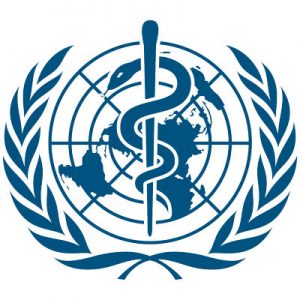The World Health Organization Really Hates Vaping
At a time when many around the world are criticizing the lavishly funded World Health Organization for the way it handled the ongoing Covid-19 pandemic, especially in the early stages, the international organization is giving vapers another reason to question its interests.
 With World No Tobacco Day fast approaching the World Health Organization has already kicked off a special campaign, complete with promotional banners featuring children smoking and vaping, as well as the usual arsenal of lies and half-truths. If you were hoping for some support for a harm-reduction approach aimed at lowering the number of tobacco cigarette smokers, I’m afraid you will be very disappointed, as this year’s World No Tobacco Day seems to be all about protecting kids from nicotine addiction, especially in the form of e-cigarette use.
With World No Tobacco Day fast approaching the World Health Organization has already kicked off a special campaign, complete with promotional banners featuring children smoking and vaping, as well as the usual arsenal of lies and half-truths. If you were hoping for some support for a harm-reduction approach aimed at lowering the number of tobacco cigarette smokers, I’m afraid you will be very disappointed, as this year’s World No Tobacco Day seems to be all about protecting kids from nicotine addiction, especially in the form of e-cigarette use.
In a clip viewable on its official website, the WHO reveals a dark secret to the world – tobacco companies are losing around 8 million customers per year, so in order to replace them and cover the holes in their revenues, large tobacco companies are trying to attract children and create another generation of nicotine addicts. They are doing this with new products “that may seem different than cigarettes and that they even say are less dangerous that smoking tobacco”, the video states.
Yes, you guessed it, they are talking about vaping, seemingly a public health enemy as dangerous as tobacco smoking, only more insidious as it’s targeting our youths…
“The tobacco industry is targeting a new generation,” a poster showing a little girl exhaling vapor and holding what looks like a vape mod in her hand reads.
“Children who use e-cigarettes are twice as likely to smoke cigarettes later in life,” a similar poster states, a claim based on the frequently debunked “gateway theory”, which was never confirmed by real-life data.
“If you’re product killed 8 million people a year, you’d also target a new generation,” yet another poster of a little girl holding a mod states.
As you can imagine, the disgusting posters and videos prepared by the WHO for this year’s World No Tobacco Day shocked a lot of people, many of whom went as far as to accuse the organization of crossing legal boundaries and denouncing its relationship with billionaire Michael Bloomberg, through Bloomberg Philanthropies.
“This year, instead of focusing on heated tobacco, the WHO wants to demonize nicotine by using children. The posters offered are more than biased and have no scientific basis. On the contrary, they can be an incentive to experiment with tobacco products,” Dr Philippe Arvers, army doctor and administrator of the Société francophone de tabacologie (SFT), wrote on his LinkedIn account.
But the World Health Organization didn’t stop at shocking images to fulfill its goal of slandering vaping. On its website, you can read lies like vaping “increases the risk of cancer, cardiovascular and pulmonary disease”, or “children and adolescents who use e-cigarettes at least double their chance of smoking cigarettes later in life.”
Among the tactics the vaping industry uses to market to children, the WHO lists: over 15,000 enticing flavors, sleek, sexy vaping devices, social media marketing, free product samples, sponsored events and parties, and the list goes on. These guys are just as bad as Big Tobacco, is what the WHO is trying to say.
We’ve always known that the World Health Organization was no fan of vaping as a safer alternative to tobacco smoking. Despite growing scientific evidence that e-cigarettes were less harmful to human health than tobacco cigarettes, the international organization never changed its stance on vaping, calling it dangerous to youths, dangerous to users health, and contesting its capacity to help people quit smoking. But its stance on e-cigarettes seems to have hardened even more lately, as it continues to dedicate ample resources to its anti-vaping campaign even as the Covid-19 pandemic ravages the entire world.
In an article published last week on its official blog, the World Health Organization praised Finland for “defeating e-cigarettes” with the help of strict legislation, which makes it abundantly clear  that the organization sees vaping as a threat, not as a benefit to public health. In the article, the WHO doesn’t shy away from applauding the Northern-European country for implementing “pioneering e-cigarette regulations which covered flavor bans, age limits for buyers, prohibitions of marketing, displaying and distance selling, import restrictions and bans on use in non-smoking areas,” which have reportedly helped it to reduce tobacco smoking rates without a surge in e-cigarette use.
that the organization sees vaping as a threat, not as a benefit to public health. In the article, the WHO doesn’t shy away from applauding the Northern-European country for implementing “pioneering e-cigarette regulations which covered flavor bans, age limits for buyers, prohibitions of marketing, displaying and distance selling, import restrictions and bans on use in non-smoking areas,” which have reportedly helped it to reduce tobacco smoking rates without a surge in e-cigarette use.
“Young people who use electronic nicotine delivery systems risk developing a nicotine addiction, given that habitual use of these products is primarily established in adolescence. E-cigarettes are not harmless – the nicotine found in them can have long-term effects on the developing brain. Protecting young people is therefore a value at the heart of the tobacco control approach taken in Finland, especially as e-cigarettes are relentlessly marketed to young people,” the WHO’s blog post reads.
Finland is basically being praised for taking an all-or-nothing approach, instead of promoting harm reduction. If it works for them, that’s great, but then again tobacco harm reduction has been showing some very encouraging results in the United Kingdom, where yearly surveys are showing a significant decrease in the number of smokers, without any noticeable increase in the number of youth vapers. But the WHO prefers to ignore that kind of approach, as it doesn’t align with its vision…
Never mind the fact that the electronic cigarette is NOT factually a tobacco product – it doesn’t contain any tobacco or tobacco-derived product, especially if you don’t vape nicotine-infused e-liquid – or that most comprehensive scientific reviews have found it to be about 95% less harmful than smoking. All that matters is the view of the World Health Organization, scientific and social evidence be damned…
















